Abstract
Methane was oxidized to carbon dioxide in the absence of oxygen by water samples from Lake Mendota, Madison, Wis. The anaerobic oxidation of methane did not result in the assimilation of carbon from methane into material precipitable by cold 10% trichloracetic acid. Only samples taken at the suface of the sediment of Lake Mendota were capable of catalyzine the anaerobic oxidation of methane. The rate of methane oxidation in the presence of oxygen was highest in samples taken from near the thermocline. Of the radioactive methane oxidized, 30 to 60% was assimilated into material precipitable by cold 10% trichloroacetic acid during aerobic incubation of the samples. These data support the conclusion that two distinct groups of methane-oxidizing organisms occur in stratifield lakes. Enrichments with acetate and methane as the sole sources of carbon and energy and sulfate as the electron acceptor resulted in the growth of bacteria that oxidize methane. Sulfate, acetate, and methane were all required for growth of enrichments. Acetate was not oxidized to carbon dioxide but was assimilated by cells. Methane was not assimilated but was oxidized to carbon dioxide in the absence of air.
Full text
PDF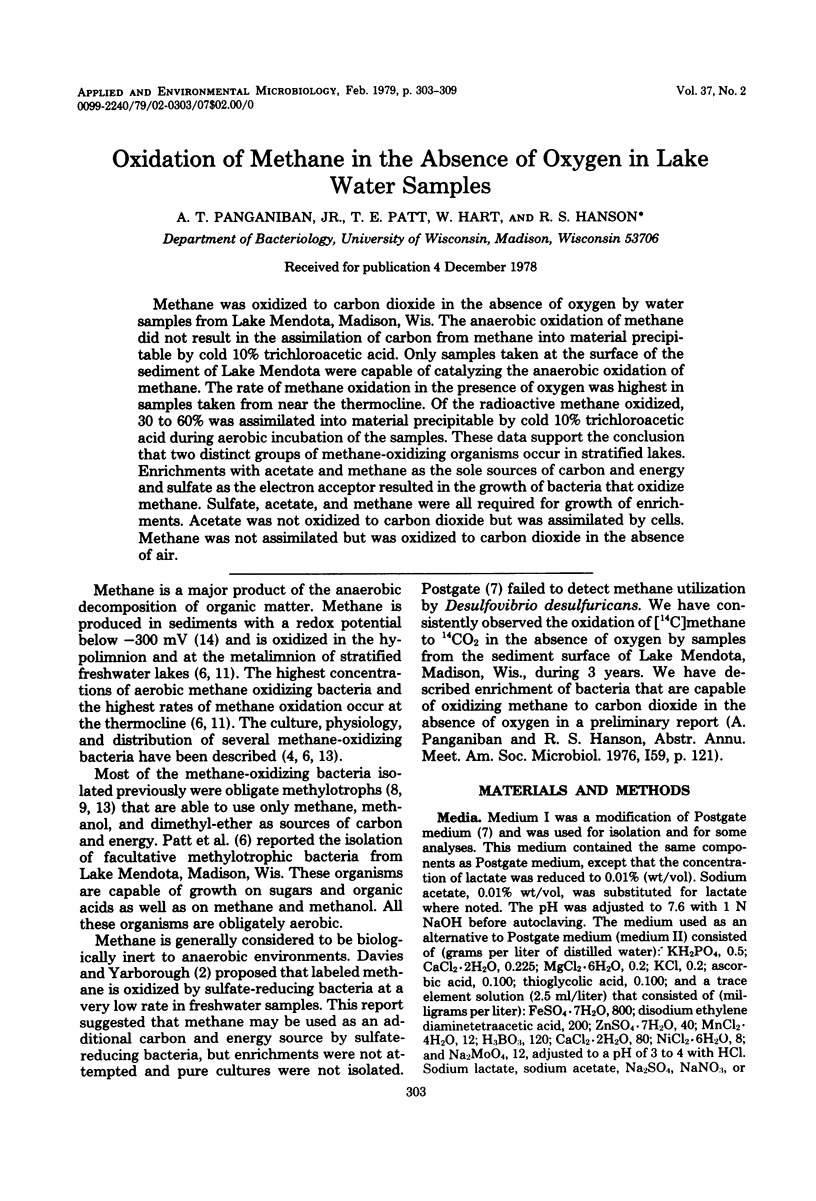
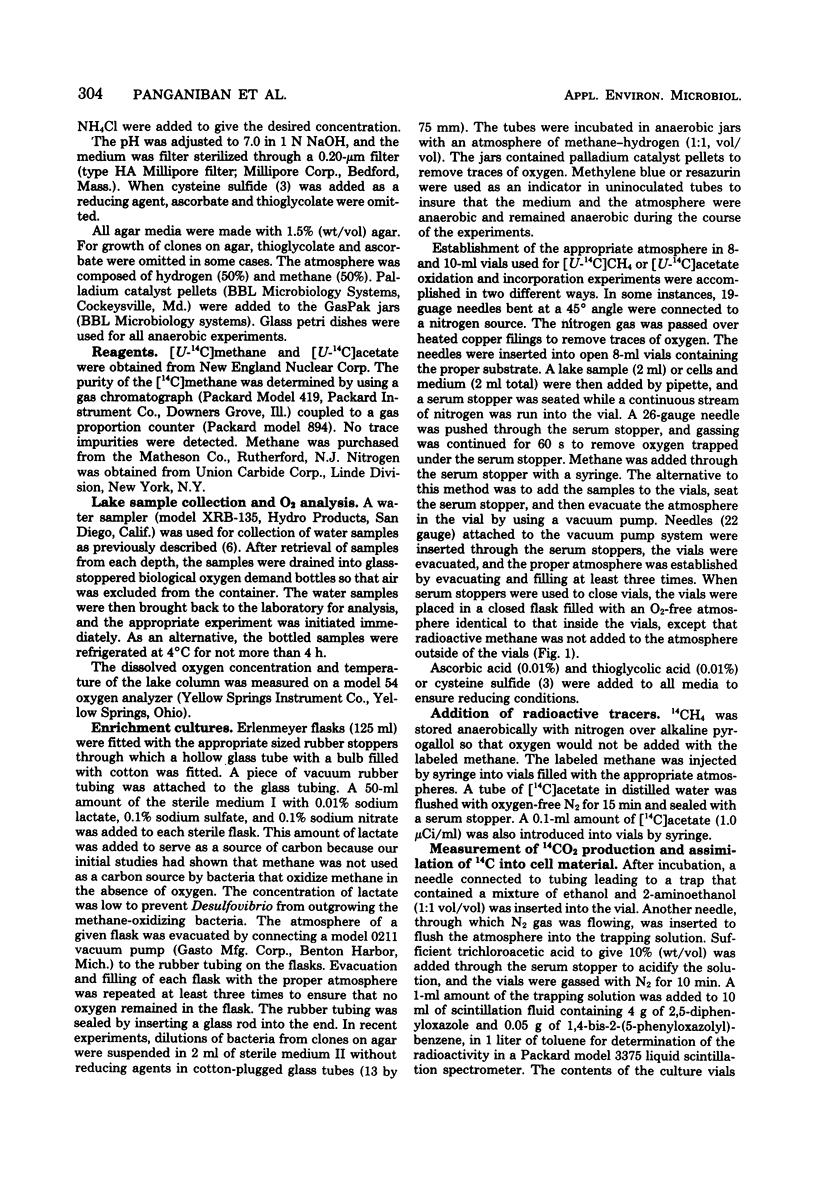
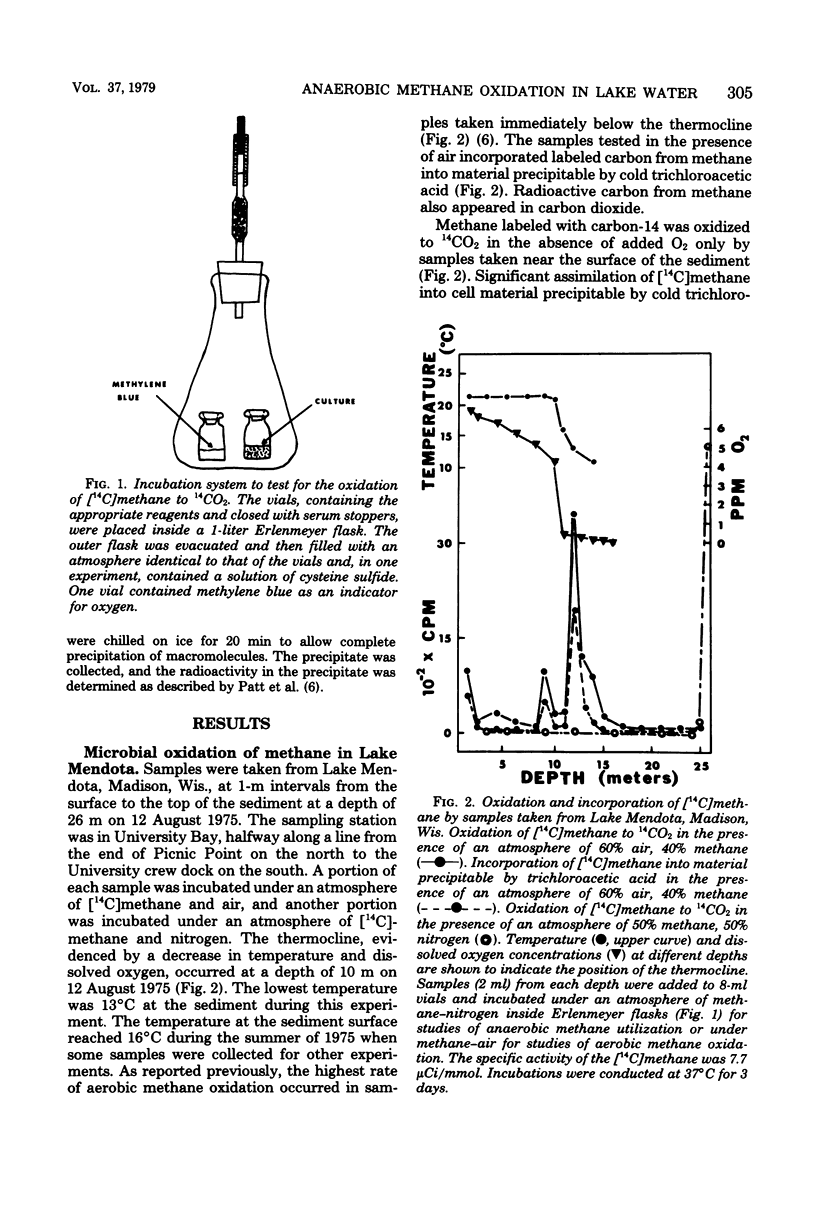
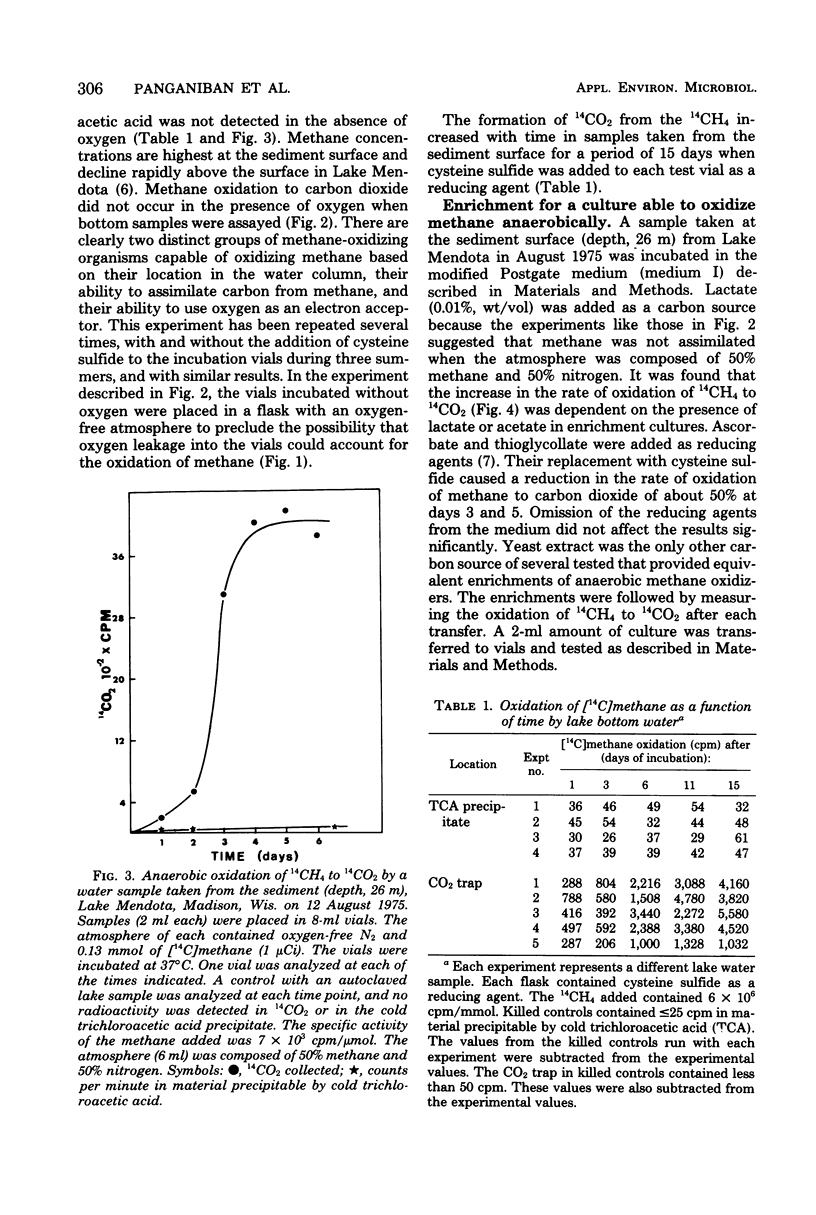
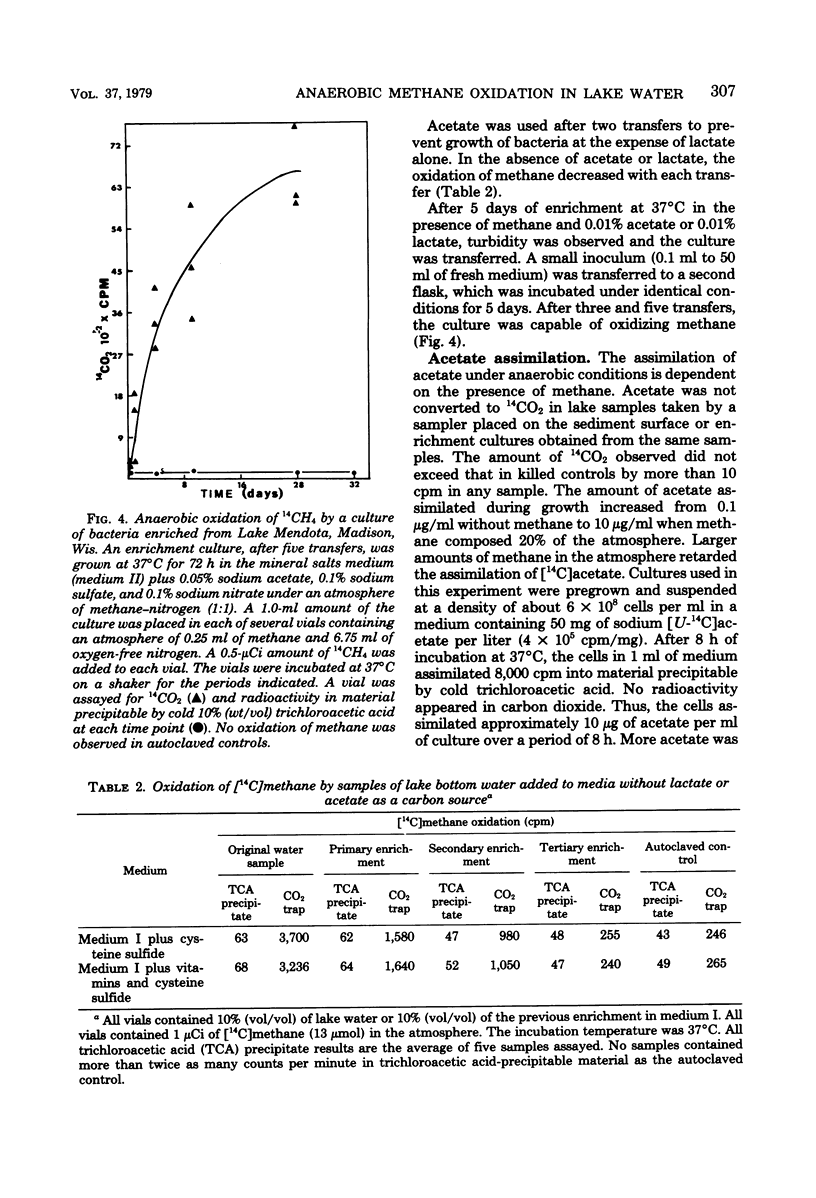
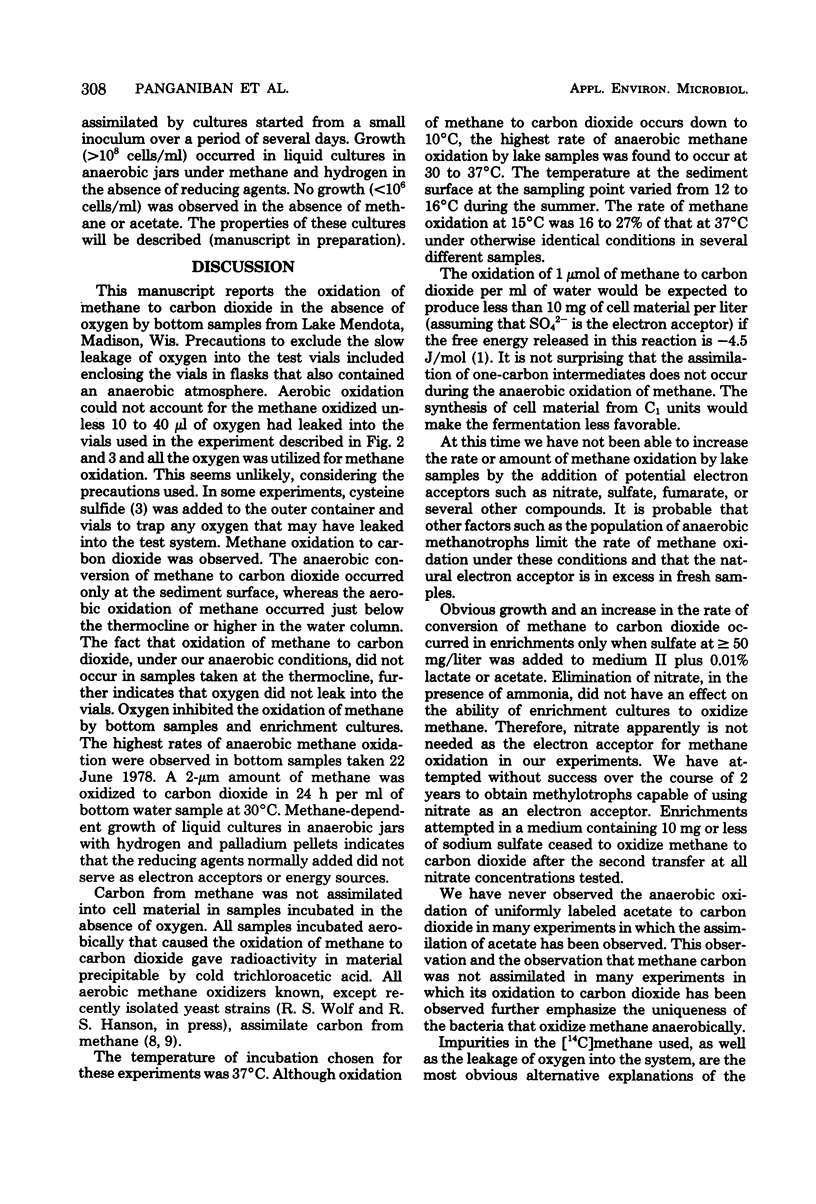
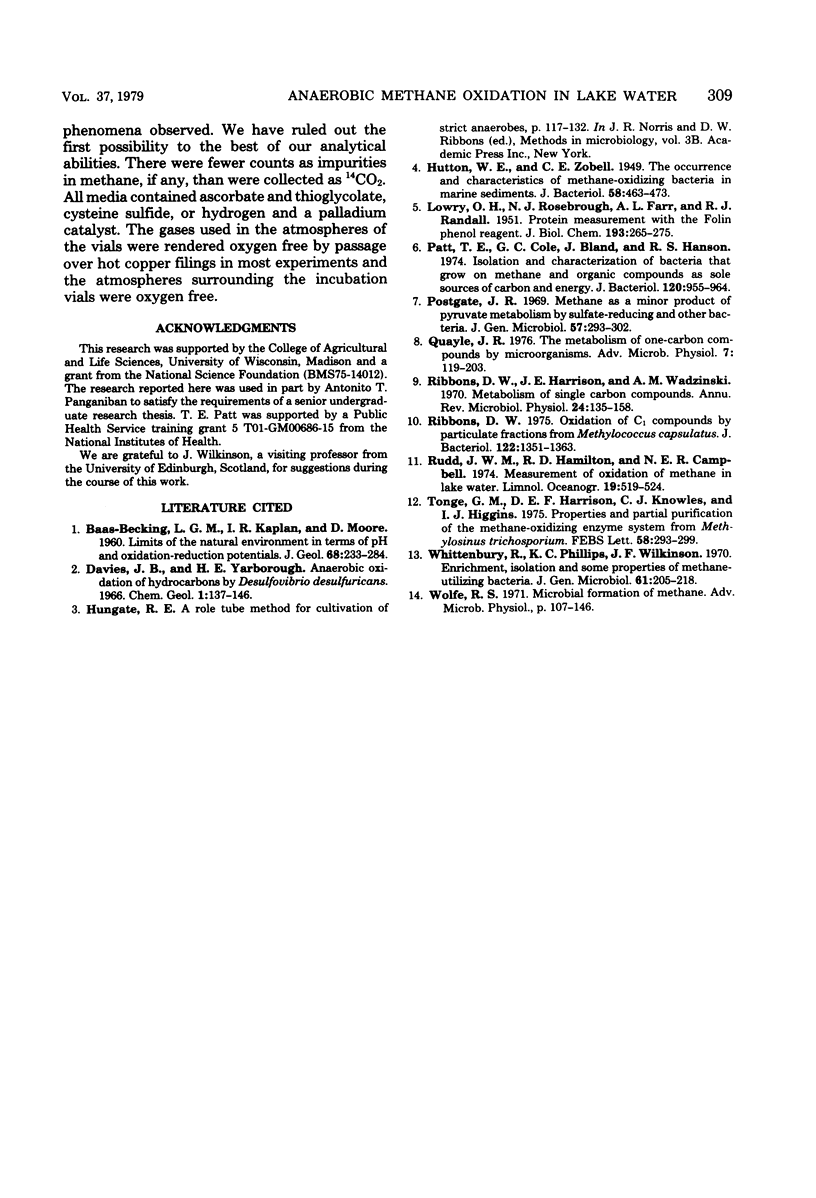
Selected References
These references are in PubMed. This may not be the complete list of references from this article.
- Hutton W. E., Zobell C. E. THE OCCURRENCE AND CHARACTERISTICS OF METHANE-OXIDIZING BACTERIA IN MARINE SEDIMENTS. J Bacteriol. 1949 Oct;58(4):463–473. doi: 10.1128/jb.58.4.463-473.1949. [DOI] [PMC free article] [PubMed] [Google Scholar]
- LOWRY O. H., ROSEBROUGH N. J., FARR A. L., RANDALL R. J. Protein measurement with the Folin phenol reagent. J Biol Chem. 1951 Nov;193(1):265–275. [PubMed] [Google Scholar]
- Patt T. E., Cole G. C., Bland J., Hanson R. S. Isolation and characterization of bacteria that grow on methane and organic compounds as sole sources of carbon and energy. J Bacteriol. 1974 Nov;120(2):955–964. doi: 10.1128/jb.120.2.955-964.1974. [DOI] [PMC free article] [PubMed] [Google Scholar]
- Postgate J. R. Methane as a minor product of pyruvate metabolism by sulphate-reducing and other bacteria. J Gen Microbiol. 1969 Aug;57(3):293–302. doi: 10.1099/00221287-57-3-293. [DOI] [PubMed] [Google Scholar]
- Powell M. R., Doebbler G. F., Hamilton R. W., Jr Serum enzyme level changes in pigs following decompression trauma. Aerosp Med. 1974 May;45(5):519–524. [PubMed] [Google Scholar]
- Ribbons D. W., Harrison J. E., Wadzinski A. M. Metabolism of single carbon compounds. Annu Rev Microbiol. 1970;24:135–158. doi: 10.1146/annurev.mi.24.100170.001031. [DOI] [PubMed] [Google Scholar]
- Ribbons D. W. Oxidation of C1 Compounds by Particulate fractions from Methylococcus capsulatus: distribution and properties of methane-dependent reduced nicotinamide adenine dinucleotide oxidase (methane hydroxylase). J Bacteriol. 1975 Jun;122(3):1351–1363. doi: 10.1128/jb.122.3.1351-1363.1975. [DOI] [PMC free article] [PubMed] [Google Scholar]
- Tonge G. M., Harrison D. E., Knowles C. J., Higgins I. J. Properties and partial purification of the methane-oxidising enzyme system from Methylosinus trichosporium. FEBS Lett. 1975 Oct 15;58(1):293–299. doi: 10.1016/0014-5793(75)80282-1. [DOI] [PubMed] [Google Scholar]
- Whittenbury R., Phillips K. C., Wilkinson J. F. Enrichment, isolation and some properties of methane-utilizing bacteria. J Gen Microbiol. 1970 May;61(2):205–218. doi: 10.1099/00221287-61-2-205. [DOI] [PubMed] [Google Scholar]
- Wolfe R. S. Microbial formation of methane. Adv Microb Physiol. 1971;6:107–146. doi: 10.1016/s0065-2911(08)60068-5. [DOI] [PubMed] [Google Scholar]


